Are ED Glass Binoculars Better Than BAK-4 Binoculars?
Contents
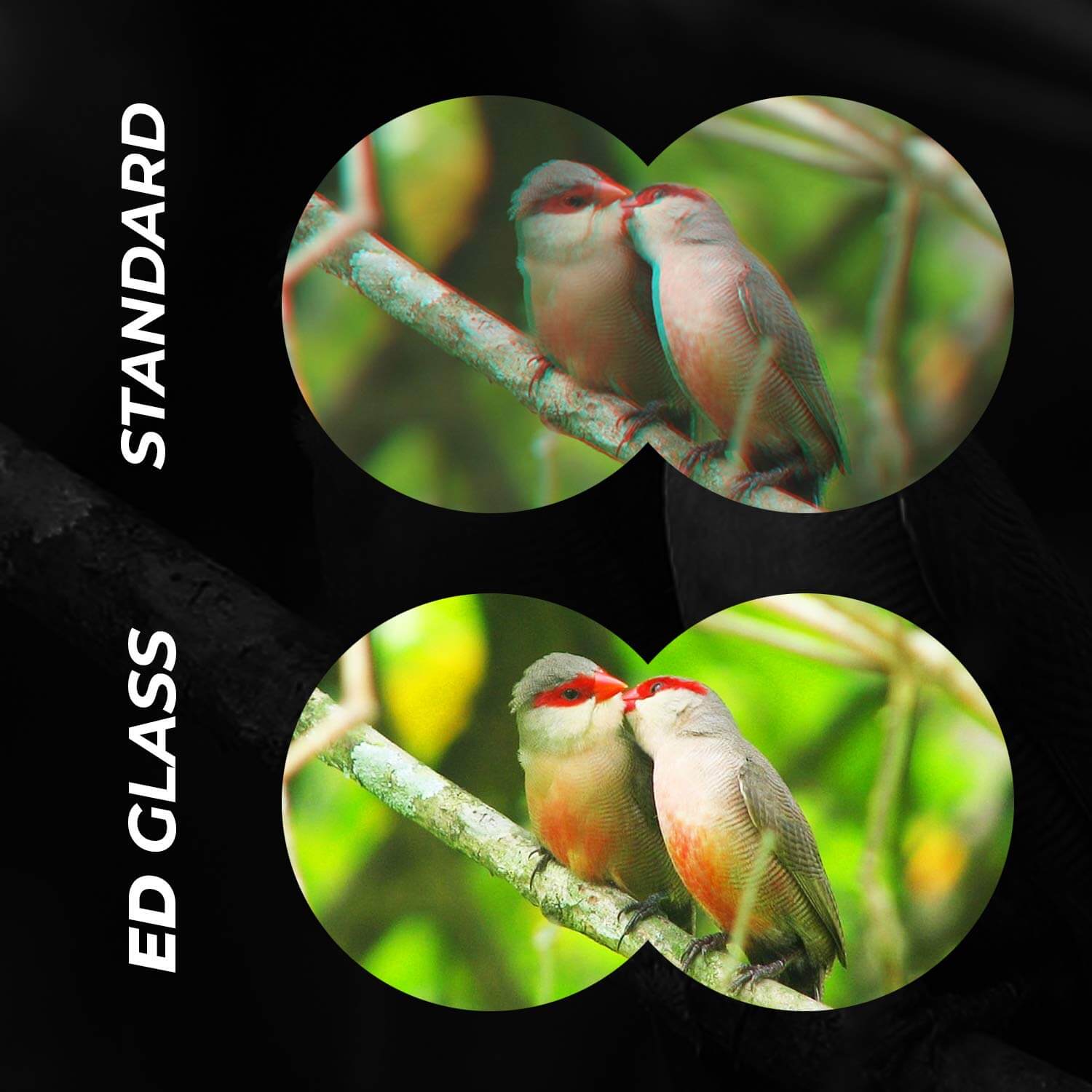
When we choose binoculars no doubt we want to choose the best one for our money. Some of them are cheap, others are costly.
This is very understandable. Everyone make their choice depending on the budget.
When it comes to choosing BAK-4 or ED glass binoculars, it looks like for many people it’s a kind of a mystery that many want to figure out.
And this is what we are going to do today in this short educational post.
There are mainly three type of prisms used today in binoculars. Depending on the prism used in a binocular price may differ a lot.
There are 3 types of prisms:
- BK-7
- BAK-4
- ED Glass
BK-7 Prism Binoculars
BK-7 prism is the cheapest one and the image quality in such binoculars far from being perfect. It’s still not bad. I would say it’s acceptable.
The image you see in BK-7 binoculars is not as bright and clear as you see in BAK-4 binoculars. Borosilicate glass is often used in BK-7 prim binoculars.
On the image below you can see the difference between BAK-4 and BK-7 binoculars. The image says more than words.
Generally speaking I never recommend BK-7 prism binoculars because of the low quality image.
Such optical instrument can be recommended only if you are on a tight budget and want a pair of binocular for general use purposes.
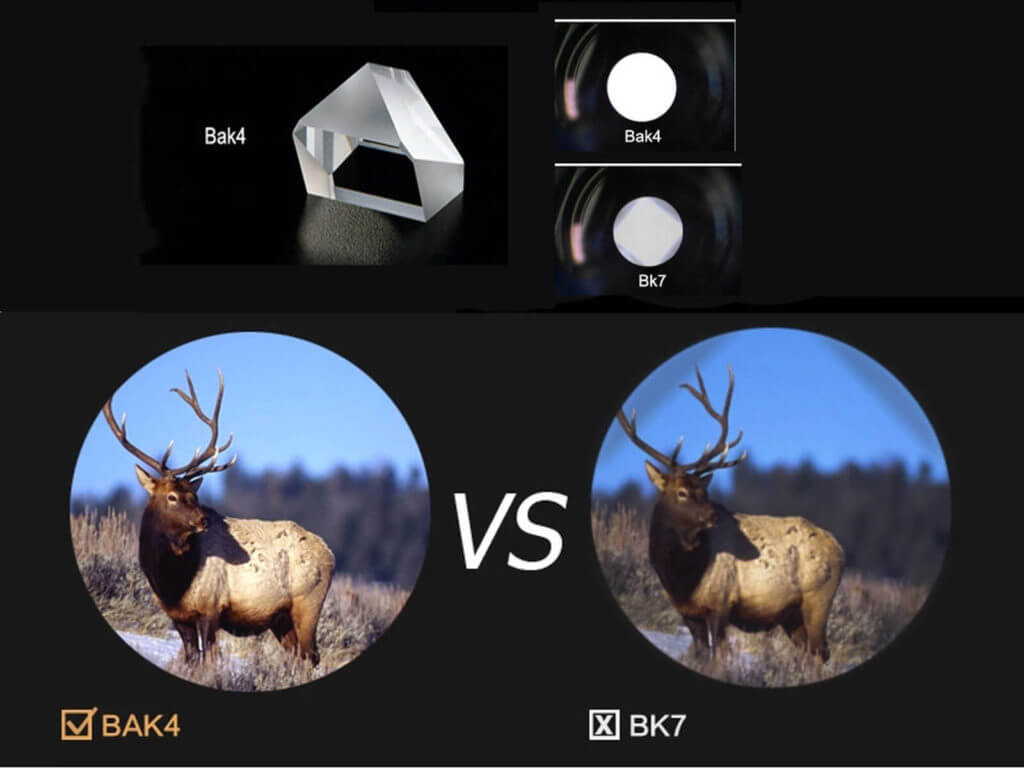
BAK-4 Prism Binoculars
BAK-4 prism binoculars are very solid optical instruments that deliver high quality, bright and crystal clear image thanks to Barium Crown glass used in the optics.
It’s used even in high-end binoculars for several hundred bucks.
You must also keep in mind that Chinese BAK-4 prism very often means Schott PSK3 which is in fact phosphate crown glass while premium quality BAK-4 prism uses Barium Crown glass.
These two things are not the same and it significantly affects the image quality in the binoculars.
Crown glass has low dispersion which its around 60 Abber number or aka V-numbers. It’s known as a measure of dispersion used in optics.
6o is a high number which means quality optics. In some expensive binoculars this number can be as high as 75 or even 85 used in some phosphate crown glasses.
Cheapest ED Glass Binoculars
ED Glass Binoculars
ED Glass binoculars are the most expensive optical instruments because of using highest quality of optics in the binoculars.
They provide the best image quality you can ever see when looking through binoculars.
This is achieved thanks to reducing chromatic aberration to the maximum.
Technically it is achieved thanks to using concave lens of flint glass combined with a convex lens which produces achromatic doublet.
In the end thanks to using ED Glass in the binoculars you get super quality image that has no chromatic aberration or in other words without color fringing.
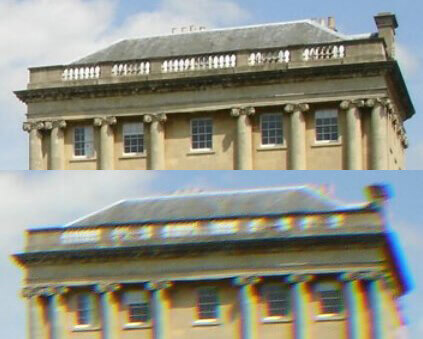
I can’t say this color fringing is very noticeable when looking through binoculars. In some binoculars it’s very noticeable, mainly in cheap binoculars.
In high end binoculars it’s not. But for professional users it may be important which is why they prefer to choose ED glass binoculars.
Lens Used in Binoculars
There are three types of lenses used in binoculars:
Compound lenses – Single lens type that consists of a single optical element. This type of lens can’t do much to correct chromatic aberration
Achromatic Doublet – Compound lens. This type of lens is made of a low dispersion glass and consists of two optical elements.
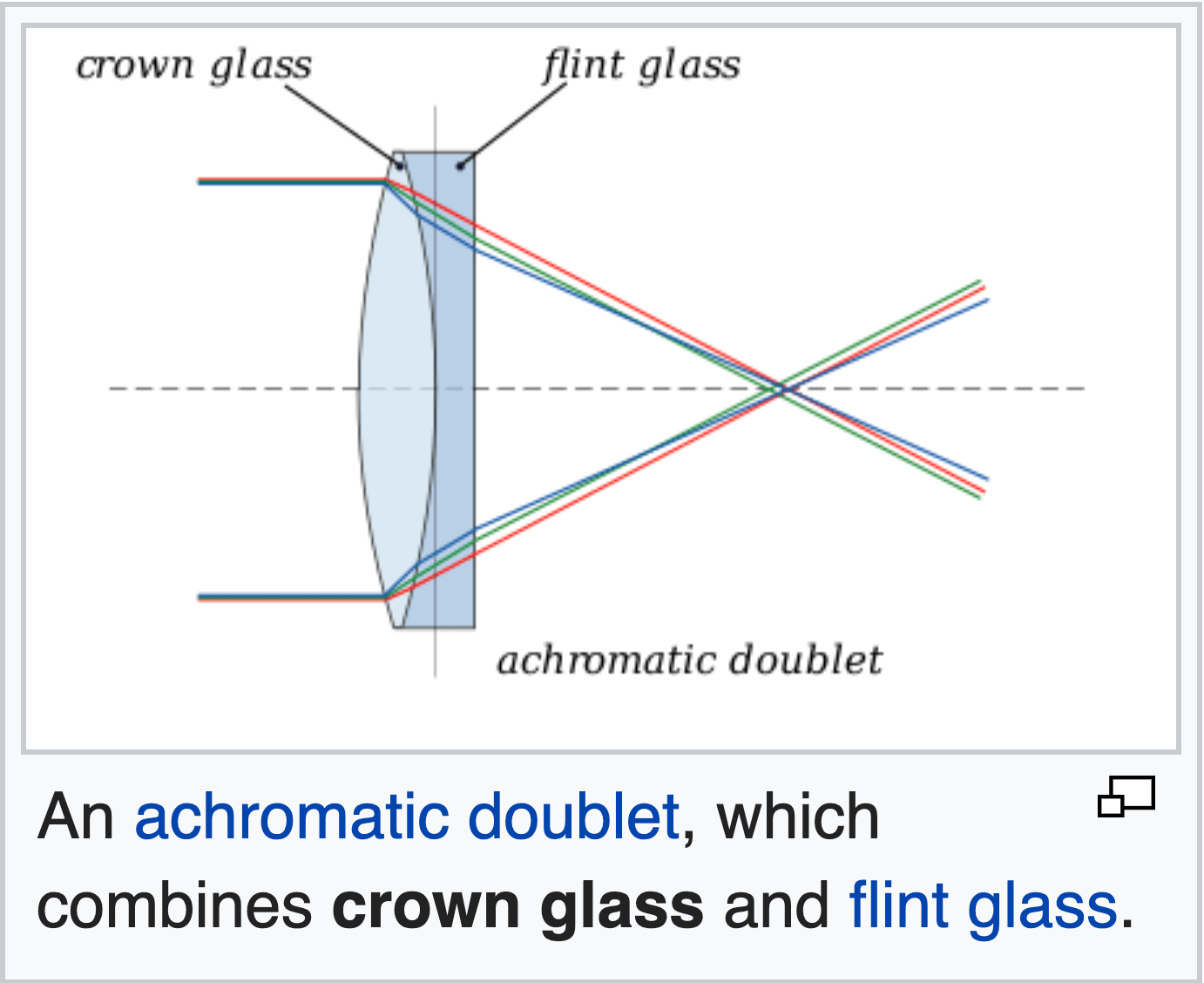
This lens does reduce chromatic aberration significantly but it’s not a perfect solution.
Apochromatic Lenses – Consists of three elements and does a great job to not only reduce chromatic aberration but also provides an image that has almost zero of color fringing.
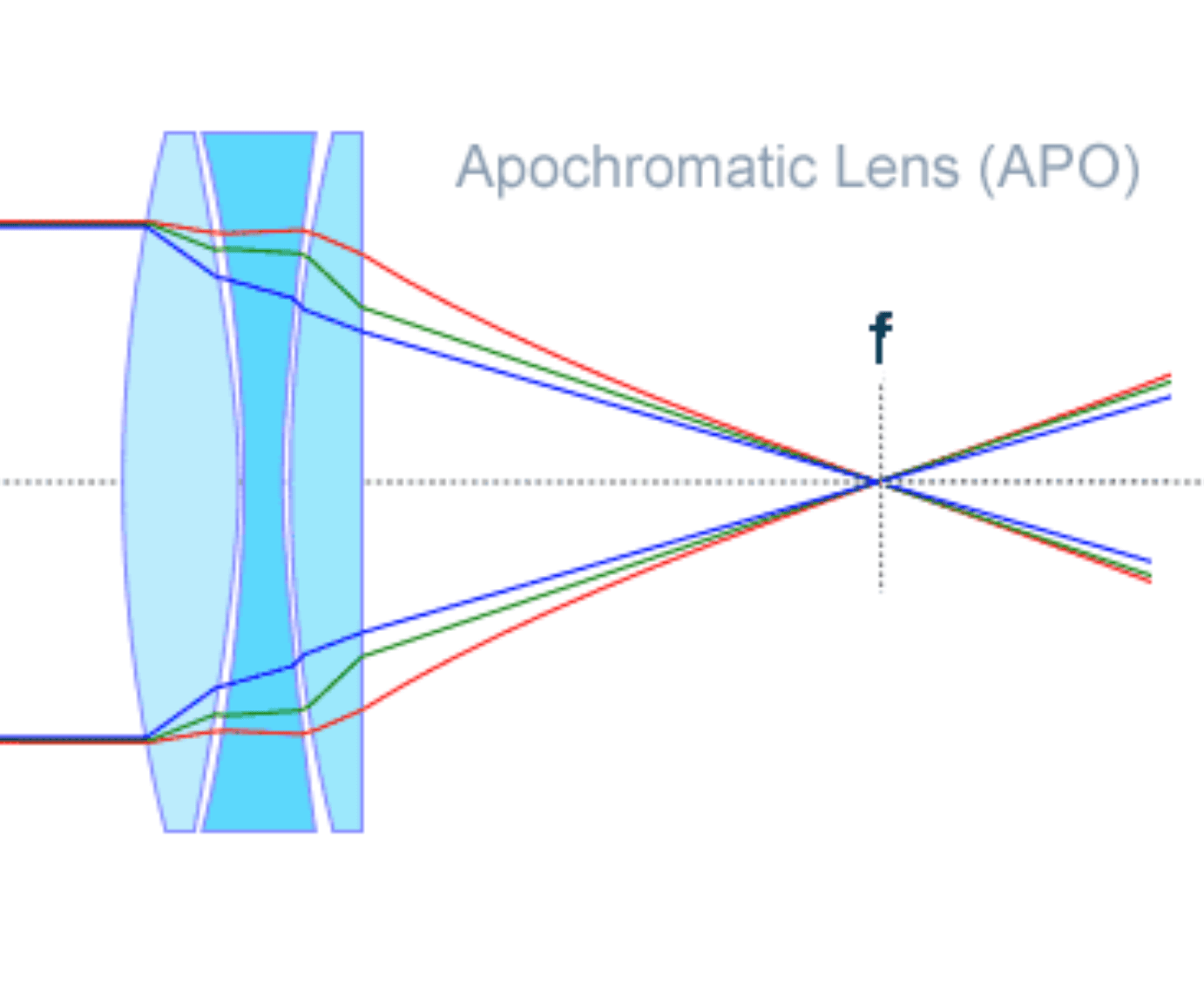
Is there any visual difference between BAK-4 and ED Glass?
Yes, there is a difference. As I mentioned above, there is a difference between standard BAK-4 and ED Glass binoculars.
Both provide bright, clear and sharp image but ED Glass has no chromatic aberration or in other words color fringing.
But is there any difference among ED Glass binoculars?
Yes, there is a difference. Not all ED Glass binoculars are same. The quality of image depends on lens coating used in the optics.
All this is done to minimize chromatic aberration.
Binoculars with ED Glass that cost $200-$300 can’t deliver the same image quality as binoculars with ED Glass that cost around $1.000.
This is very obvious because in high end models manufacturers of optics use advanced lens coating.
All this is done to provide not only bright, clear and sharp image but to deliver image with no chromatic aberration at all.
ED Glass Binoculars
Vortex Optics Razor HD Roof Prism Binoculars, 10×50
– Wide field of view
– Magnification power 10x
– Fully multi-coated high quality optics
– 82% Customer satisfaction
– Price: $1,088


Vortex Optics Razor HD Roof Prism Binoculars, 8×42
– Wide field of view
– Magnification power 8 x
– Fully multi-coated high quality optics
– 82% Customer satisfaction
– Price: $1,279
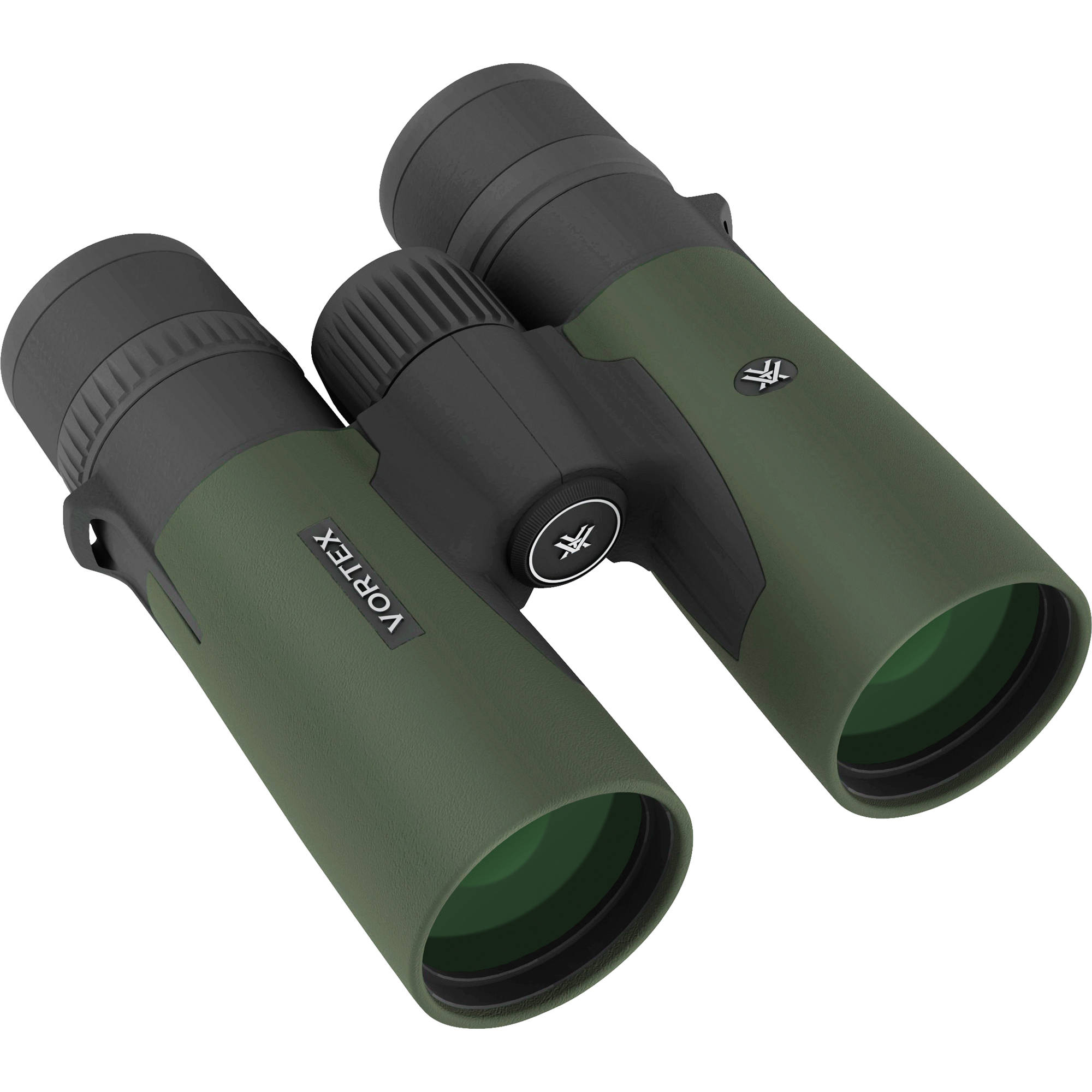

Vortex Optics Kaibab HD Binoculars, 18×56
– HD Water Proof Roof Prism
– Magnification power 18
– Customer satisfaction: 85%
– Price: $998
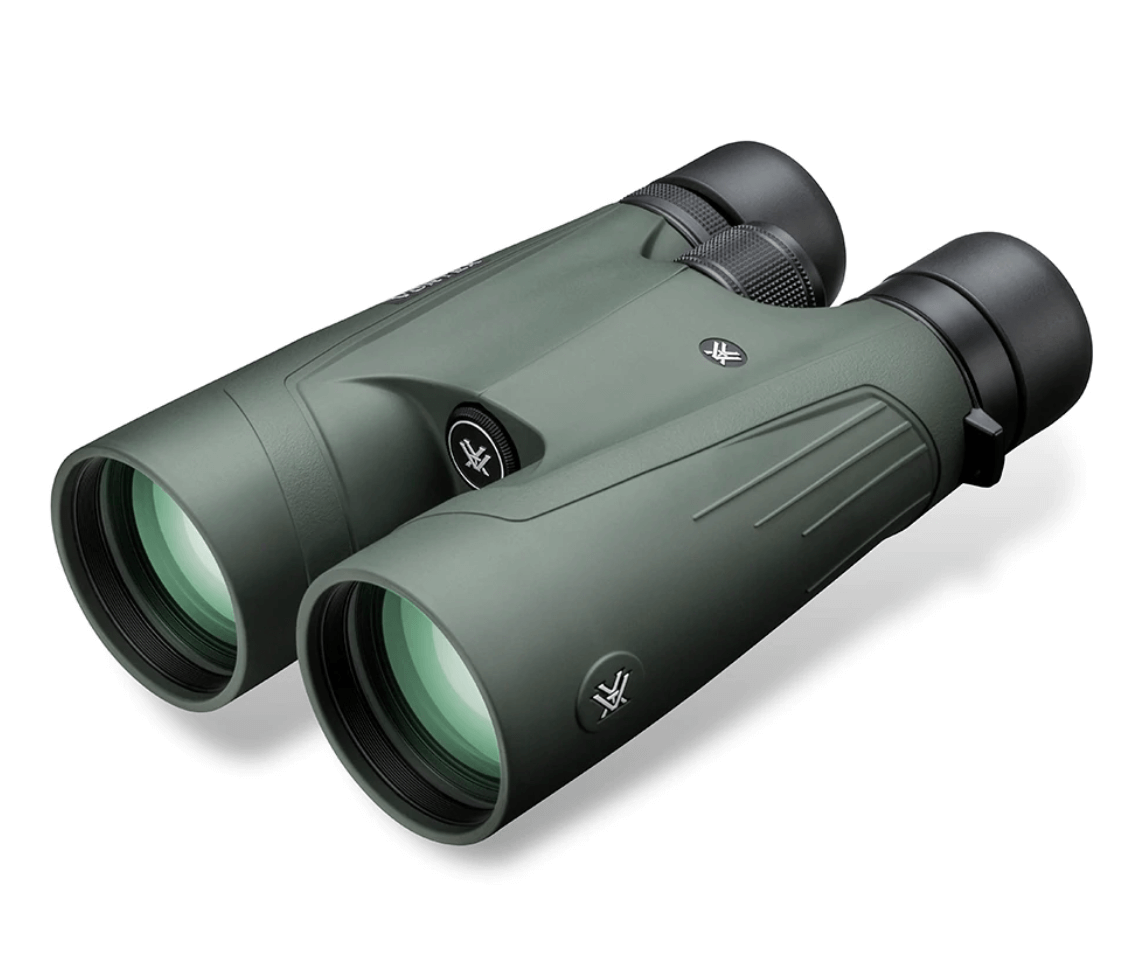

Vortex Optics Ranger HD R/T Binoculars 10×50
– Wide field of view
– Magnification power 10x
– HD premium high quality optics
– Customer satisfaction: 100%
– Price: $799
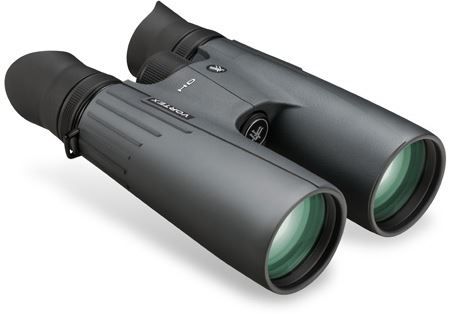

Pentax ZD 10 x 43 ED Binoculars – Roof prism
– Phase-corrected Bak-4 Prism, Waterproof, Fogproof
– Magnification power 10, Extra low-dispersion glass
– Customer satisfaction: Yes
– Price: $1,399
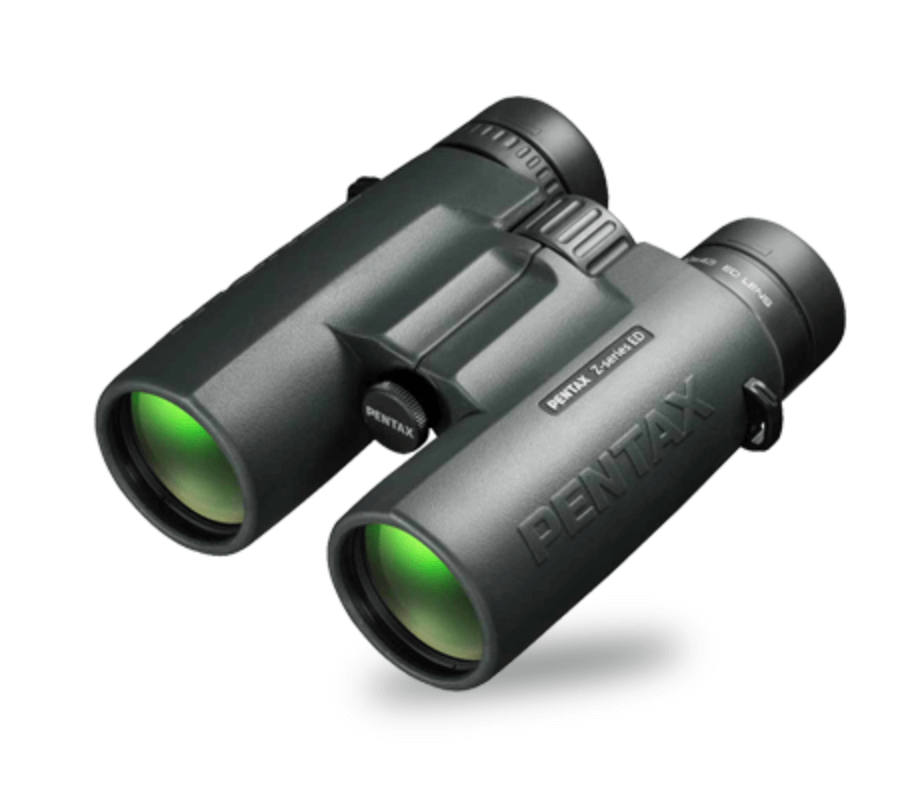

Swarovski SLC 10×42 Waterproof Binoculars
– Wide angle of view (61-degree apparent field of view)
– HD Glass Prism
– Magnification power 10
– Customer satisfaction: 100%
– Price: $1,799
– 10-year warranty
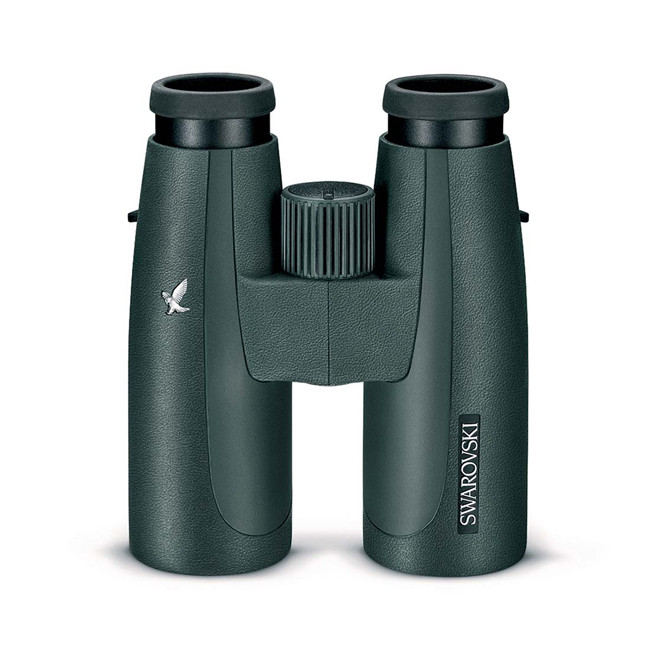

Wingspan Optics Skyview Ultra HD – 8X42
– Wide field of view
– Magnification power 8x
– Extra-Low Dispersion ED Glass
– Waterproof, Fogproof
– 94% customer satisfaction
– Price: $157
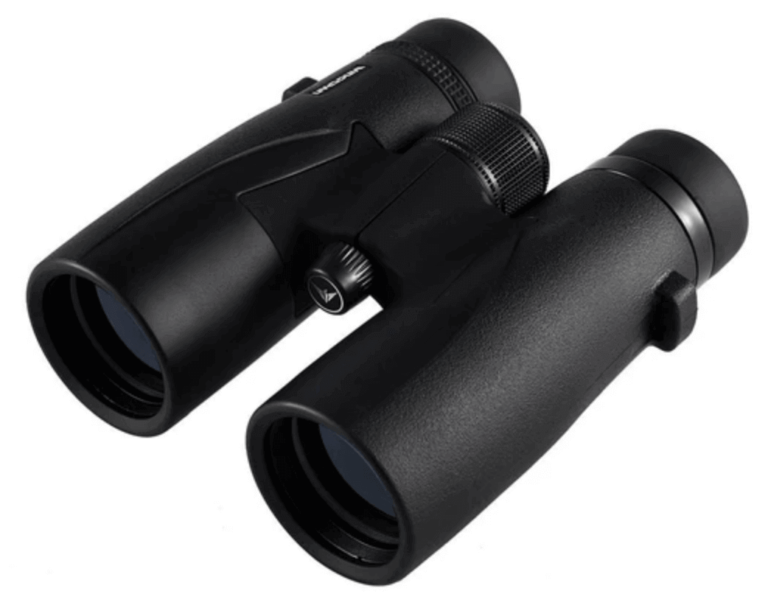

Wingspan Optics Phoenix Ultra HD – 8X42 Bird Watching Binoculars with ED Glass
– Wide field of view (Field of View: 393 feet at 1,000 yards, 7.5 degrees angle of view)
– Waterproof/Fogproof
– Magnification power 8x
– Prism: Bak-4, ED Glass
– 93% customer satisfaction
– Price: $159.92
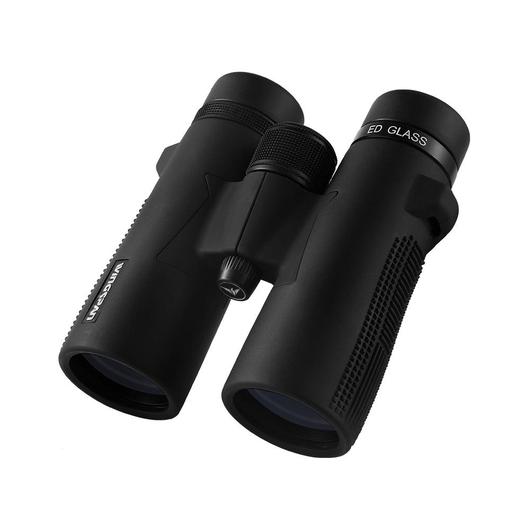

Wingspan Optics Thunderbird Ultra HD – 8X42 Binoculars
– Wide field of view (Field of View: 420 feet at 1,000 yards, 8 degrees angle of view)
– Waterproof/Fogproof
– Magnification power 8x
– ED Glass
– 91% customer satisfaction
– Price: $249.92
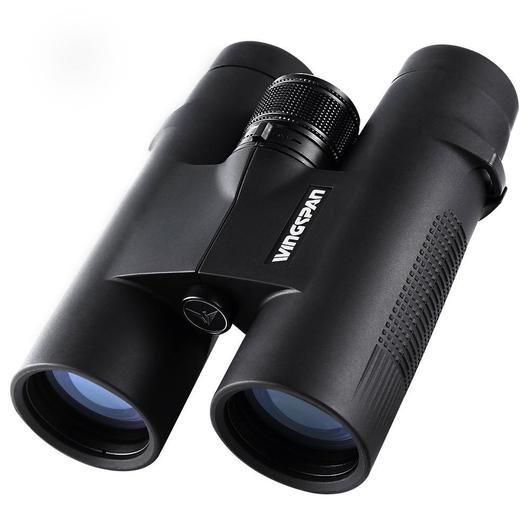






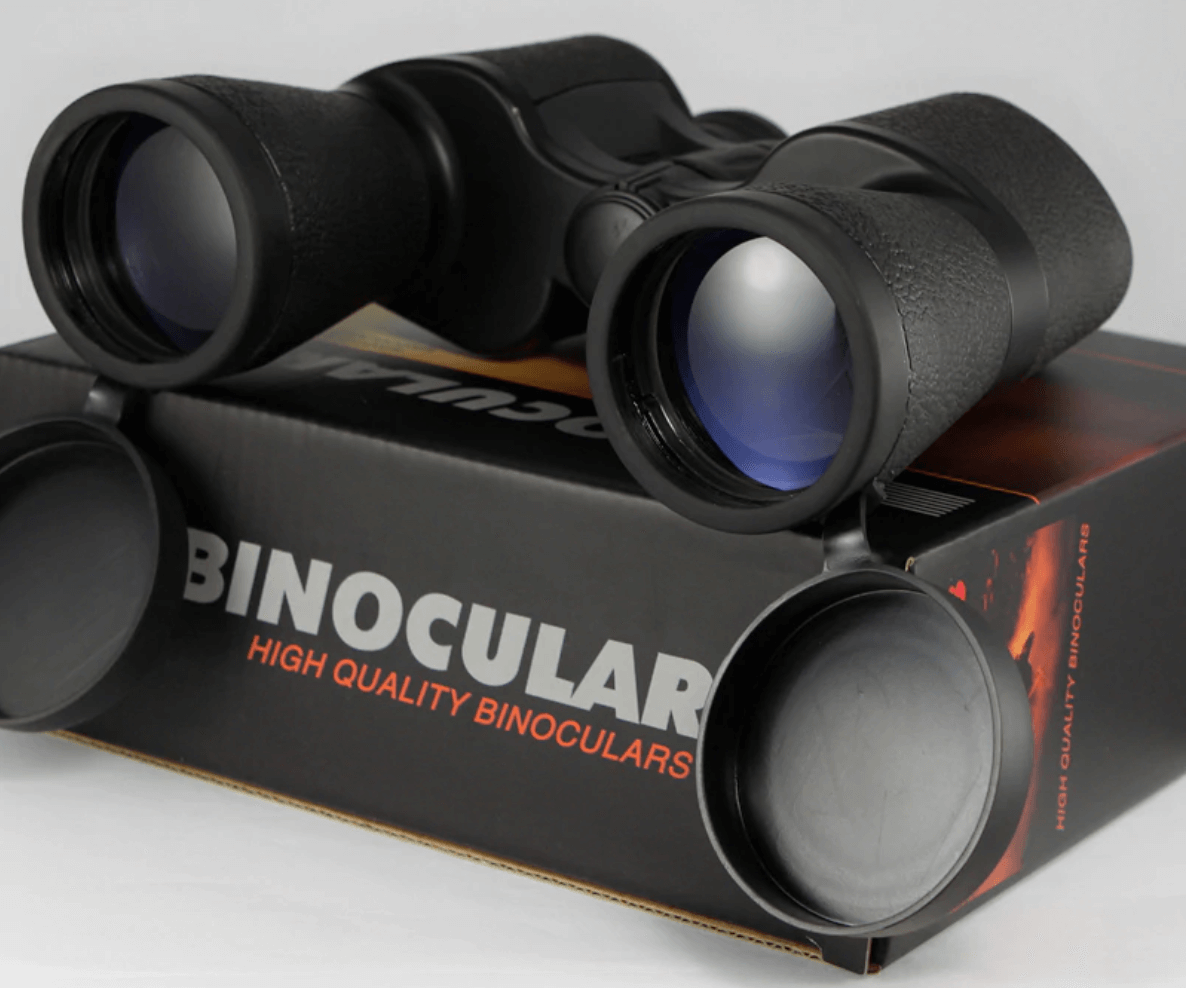
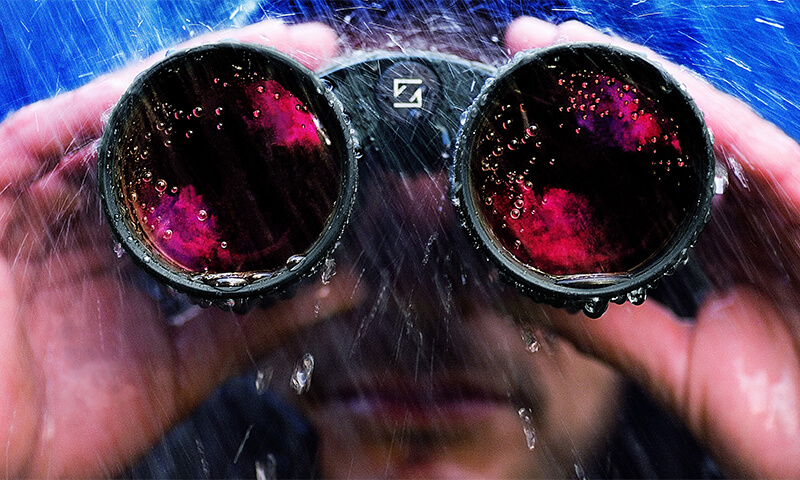
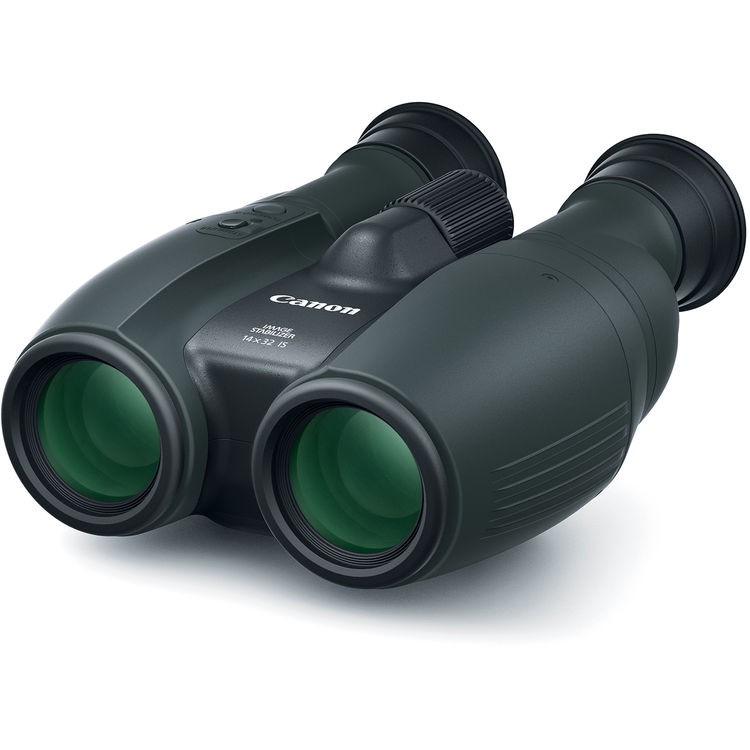
I’m not sure it is even worth a comparison between ed glass binoculars and the bak4 binoculars. Indisputable, Bak4 is simply awesome too and also boasts of a great lens with good quality of display but the ed glasses binoculars are just some ways ahead. Just simply not the original and that is awesome. Thank you so much for sharing all these out from the listing here, I can only go for anyone because they are all of great and awesome quality of display too.
I agree, BAK-4 produces an excellent image and in fact there is no huge difference between ED glass and BAK-4 binoculars. The only difference is that high end ED Glass binoculars have no color fringing. So, if’s important for you then go for ED Glass. Otherwise BAK-4 will satisfy your needs.
Very interesting. I’ve had various binoculars over the years of varying quality but I never really looked into it and understood the type of glass inside. I know how a prism works, as far as a crystal, but for whatever reason it didn’t occur to me that that is what is used inside binoculars. I think between Bak4, Bak7 and ED glass I would choose ED glass. Seems wise to just pay a little extra and get the clearly visually superior image quality of the ED glass binoculars. Thanks for the very informative and helpful binoculars review guide, appreciate it.
I agree, you can choose medium class ED Glass around $150 and it will outperform standard BAK-4 binocular. When it comes to high end ED Glass binoculars they are very expensive and recommended for professionals or for someone who has enough money to buy such an excellent piece of optics.
What perfect timing. Summer is here in New Zealand and my wife and I have decided to do a spot of bird watching now that the kids are busy doing their own thing. I really want to find the clearest binoculars and had no idea of the different used. Let alone how advanced they have become.
The last pair I owned was Birthday present when I was an early teen. I appreciate your advice and I think I am going to go with the Bak-4 Binoculars for sure.
Regards Ropata
For bird watching I recommend to go binoculars with magnification 8x. They have wide field of view which is extremely important for bird watching. I believe BAK-4 will satisfy your needs.
I use to have a binocular that present objects are a bit blurry, but can’t view an Avery far distance. Due to the nature of my job, I had to get a better one which wasn’t good enough still. I have seen quite a number of binocular online but non seem to be as good as I want. Learning about the lenses used in making them here is a really good edge for me because I don’t need to read many reviews before buying any more. I just need to check the lens that was used. Besst regards.
If your binocular gives you a blurry image I think it’s because it has bK-7 prism. It’s not about lens alone. Just choose BAK-4 prism and fully multi coated lenses. Such a binocular will deliver high quality, bright, clear and sharp image.
Thanks for this article about binoculars because all along i have been in need of a binocular but i didn’t know which type to have and why that type but by this article i have already got the idea about which binocular to have i would prefer to have that of ED glass binocular thanks for this article
I’m glad I was able to help you make the right choice. You can choose the right one on this page. Some of them around $150 which is more than enough for your needs.
Hi Adam,
That’s a great comparison review post.
I’ve always loved sight seeing especially because I come from a place/country where there’s robust wildlife. With quality binoculars, viewing distant wildlife becomes quite easy and exciting.
I have ever requested a manufacturer to make 10 binoculars samples for me. However, I didn’t have the knowledge of which prisms and lenses. I requested to have BAK-4 because I didn’t know that there was ED glass which could have given me a better quality product. Which of the two materials makes a bulkier and heavier binoculars for the same magnification, length and width?
Boniface
Totally agree. I have different types of binoculars at home and they all differ. Viewing objects through a binocular that produces clear and sharp image makes a lot of difference. When it comes to your question, it doesn’t make any difference in weight of a binocular. Both are lightweight. Bulky binoculars are only those that are astronomical and have magnification 20x or 25x.